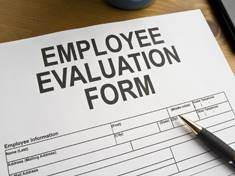Do you remember your school days? One of the questions always asked in class was, “Teacher, is this going to be on the test?” If the answer was “yes,” you paid attention. If it was “no,” you took a nap – at least figuratively.

The same is true of employees. Human beings inherently try to figure out what counts and what doesn’t. Then they model their behavior around those things that count. Understanding this concept is your first step to improving your evaluation process.
Here are some other tips that may help you.
1. Set realistic expectations. Don’t set a quota, task or goal so high that employees know they can’t reach it. There is no incentive for them to try.
2. Get input from the employee. Let the employee help you set appropriate expectations and give you feedback on what might make it difficult to achieve more. Then you can work together to improve the system that will help improve performance.
3. Agree on the targets. Because the employee has had input, you can get buy-in on the decided-upon goal. Then you both know what you’re aiming for.
4. Be clear and document the goals. Leave nothing to memory or chance. Your evaluation of performance will come many weeks – sometimes months – after you’ve set the goal. Create a document that can guide your evaluation process by listing the goals, how they were developed and how they will be achieved.
5. Evaluate what you said you would evaluate. If you haven’t told employees what they are responsible for, you have little right to hold them accountable. When you sit down with an employee for the evaluation, there should be no question about the topics that will be discussed. They are the same topics you discussed during the goal-setting session.
6. Let employees evaluate themselves. You’ll be surprised how honest people will be about their own performance if they understand how they are being measured. Discuss their opinions of their performance, and listen to their analysis. You’re managing many people, so you can’t possibly be conscious of everything – good and bad – that happened during the period. Give employees the chance to share their thoughts.
7. Agree on corrective action for those areas that are substandard. Be sure your systems are not impairing the employee’s ability to perform. Check training levels to see if they are an issue. Then agree on the specific behaviors that need to change for performance to improve. Again, get agreement. If you just tell the employee what to do, you probably will see only short-term results.
Many issues affect evaluations, from the communication styles of the manager and employee to the degree of knowledge the manager has of the job being evaluated. People want to be treated fairly. Establishing a process for evaluations and keeping employees in the loop are good first steps to improving the fairness quotient.



